Related Research Articles

A boat is a watercraft of a large range of types and sizes, but generally smaller than a ship, which is distinguished by its larger size or capacity, its shape, or its ability to carry boats.

A kayak is a small, narrow human-powered watercraft typically propelled by means of a long, double-bladed paddle. The word kayak originates from the Inuktitut word qajaq.
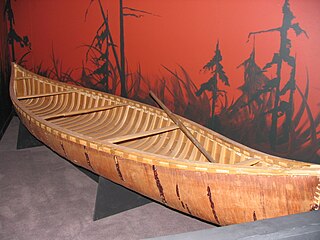
A canoe is a lightweight narrow water vessel, typically pointed at both ends and open on top, propelled by one or more seated or kneeling paddlers facing the direction of travel and using paddles.
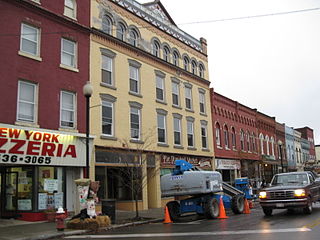
Penn Yan is an incorporated village and the county seat of Yates County, New York, United States. The population was 5,159 at the 2010 census. It lies at the north end of the east branch of Keuka Lake, one of the Finger Lakes. Penn Yan, New York is home to one of the oldest mills in the United States, The Birkett Mills, founded in 1797.
Fiberglass or fibreglass is a common type of fiber-reinforced plastic using glass fiber. The fibers may be randomly arranged, flattened into a sheet called a chopped strand mat, or woven into glass cloth. The plastic matrix may be a thermoset polymer matrix—most often based on thermosetting polymers such as epoxy, polyester resin, or vinyl ester resin—or a thermoplastic.

A concept car is a car made to showcase new styling or new technology. Concept cars are often exhibited at motor shows to gauge customer reaction to new and radical designs which may or may not be mass-produced. General Motors designer Harley Earl is generally credited with inventing the concept car, and did much to popularize it through its traveling Motorama shows of the 1950s.
The automotive aftermarket is the secondary parts market of the automotive industry, concerned with the manufacturing, remanufacturing, distribution, retailing, and installation of all vehicle parts, chemicals, equipment, and accessories, after the sale of the automobile by the original equipment manufacturer (OEM) to the consumer. The parts, accessories, etc. for sale may or may not be manufactured by the OEM.
Armstrong Siddeley was a British engineering group that operated during the first half of the 20th century. It was formed in 1919 and is best known for the production of luxury vehicles and aircraft engines.
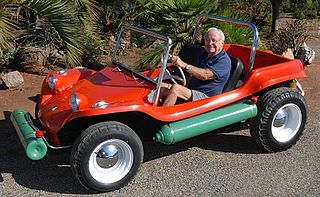
The Meyers Manx dune buggy is a small recreationally-oriented automobile, designed initially for desert racing by Californian engineer, artist, boat builder and surfer Bruce F. Meyers. It was produced by his Fountain Valley, California company, B. F. Meyers & Co. from 1964 to 1971, in the form of car kits applied to shortened chassis of Volkswagen Beetles. The car line dominated dune racing in its time, breaking records immediately, and was eventually also released in street-oriented models, until the company's demise due to tax problems after Meyers's departure. New vehicles inspired by the original Manx buggy have been produced by Meyers's re-founded operation, Meyers Manx, Inc., since 2000. The name and cat logo of the brand derives from the Manx cat, by virtue of the tailless breed's and the shortened vehicle's truncated "stubbiness".
Warrior Sports, Inc., doing business as Brine, is a sporting goods manufacturer in the United States. It manufactures lacrosse, soccer, volleyball, and field hockey equipment. It markets its products under its own brand as well as In The Crease for goals and goal accessories. The company was founded by W.H. Brine in 1922 as the W.H. Brine Company. It was privately owned by the Brine family and named Brine, Inc. before it was acquired by New Balance on August 4, 2006.
The Glasspar boat-building company was started in 1947 when Bill Tritt began building small fiberglass boat hulls in his Costa Mesa, California fiberglass shop.
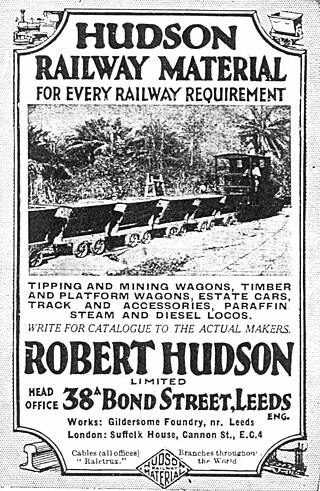
Robert Hudson Ltd was a major international supplier of light railway materials, based in Gildersome, near Leeds, England. The name was later changed to Robert Hudson (Raletrux) Ltd.

The Pennsylvania Railroad's MP54 was a class of electric multiple unit railcars. The class was initially constructed as an unpowered, locomotive hauled coach for suburban operations, but were designed to be rebuilt into self-propelled units as electrification plans were realized. The first of these self-propelled cars were placed in service with the PRR subsidiary Long Island Rail Road with DC propulsion in 1908 and soon spread to the Philadelphia-based network of low frequency AC electrified suburban lines in 1915. Eventually the cars came to be used throughout the railroad's electrified network from Washington, D.C. to New York City and Harrisburg, Pennsylvania.
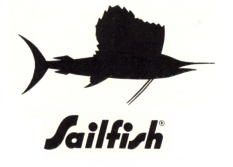
The Sailfish sailboat is a small, hollow body, board-boat style sailing dinghy. The design is a shallow draft, sit-upon hull carrying a lateen rigged sail mounted to an un-stayed mast. This style sailboat is sometimes referred to as a "wet boat" because, with its minimal freeboard, the sailor often gets splashed by spray as the boat moves across the water. This flat top was known in some coves as the "ironing board of the ocean."
Mālia is a Hawaiian-style wooden racing canoe crafted by James Takeo Yamasaki. The canoe was hewn out of blonde koa wood in Kailua-Kona, Hawaii, in 1933. Its wooden hull provided the founding model for all subsequent outrigger canoeing hulls, including those later molded from fiberglass. Hawaiian racing canoeist Tommy Holmes observed that Malia "remains a prototype for contemporary racing canoes [and] was among the first canoes built exclusively for the sport." The canoe was listed on the State and National Register of Historic Places in 1993.

The Thompson Brothers Boat Manufacturing Company of Peshtigo, Wisconsin was a manufacturer of pleasure boats and canoes. Founded by brothers Peter and Christ Thompson in 1904, the company became prominent in the field and built boats for nearly one hundred years. The Thompson Antique & Classic Boat Rally celebrates the company's history with a boat show every other year and in 2013 the Thompson Brothers canoe was celebrated at the Annual Assembly of the Wooden Canoe Heritage Association.
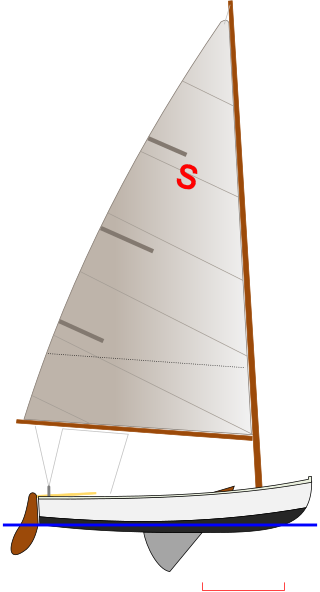
The Snowbird is an American sailboat that was initially designed by Willis Reid as a one design racer and first built in 1921. The boat was re-designed by Edson B. Schock in the 1940s and it became a popular junior class.
Hermann Hammesfahr was a Prussian-American inventor who invented a type of fiberglass cloth in which glass was interwoven with silk. He was awarded the patent by the United States Patent Office in 1880. This was the earliest fiberglass of any kind that is known to have been patented.
The E.M. White Canoe Company was founded by Edwin White, who produced wood and canvas canoes from 1889 into the 1940s. White is considered one of the pioneers of wood and canvas canoe building and one of several prominent canoe builders in Maine.
Boat building has been a part of the history of Ontario, Canada for thousands of years. From the hand-crafted birch bark canoes of the indigenous people to modern factory-built speedboats, the construction of small boats for fishing, transportation and later water sports has been a widespread commercial activity in the province.
References
- ↑ McKenna, Robert. (2003). The Dictionary of Nautical Literacy. International Marine/Ragged Mountain Press. ISBN 978-0-07-141950-5
- 1 2 3 4 Oben, Bill. (July/August 2008) "Penn Yan: How a Boat in a Barn Gave Rise to Eight Decades of Innovation". Wooden Boat, 203:72-77.
- ↑ name="pennyanguy"
- ↑ WCHA Forums, Knowledgebase, Manufacturers: The Penn Yan Boat Company, accessed October 2, 2016,
- ↑ Bond, Hallie E. (1998). Boats and Boating in the Adirondacks. Syracuse University Press. ISBN 978-0-8156-0374-0
- ↑ Stuart, Robert B., "Planing Boat", US patent 3515087, issued 1970.
- ↑ name="pennyanguy"